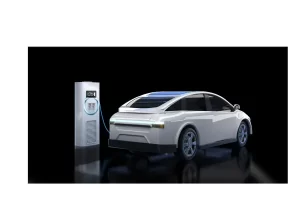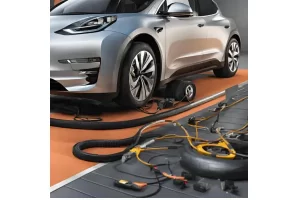As electric vehicles (EVs) gain traction in the automotive market, understanding the various incentives available to potential buyers is crucial. These incentives can significantly reduce the cost of purchasing an EV, making them a more accessible option for many consumers. This guide aims to break down the complex landscape of EV incentives, providing you with the knowledge you need to make informed decisions. Whether you’re considering your first EV purchase or are simply curious about the available benefits, this guide will help you navigate the incentives landscape.
What Are EV Incentives?
EV incentives are financial benefits designed to encourage consumers to purchase electric vehicles. These incentives can come in various forms, including tax credits, rebates, grants, and even discounts on charging equipment. The main goal of these programs is to promote the adoption of cleaner transportation options, thereby reducing greenhouse gas emissions and reliance on fossil fuels.
Types of Incentives
- Federal Incentives: These are tax credits offered by the federal government to help offset the purchase price of an EV.
- State Incentives: Many states provide additional rebates or tax credits, which can vary significantly in amount and eligibility criteria.
- Local Incentives: Cities and counties may offer their own incentives, including grants or discounts on registration fees.
- Utility-Based Incentives: Electric utility companies sometimes offer rebates or special rates for EV owners to encourage the use of electric vehicles.
Understanding these categories will help you navigate the available options and maximize your savings.
Federal Incentives for EV Buyers
Overview of the Federal Tax Credit
One of the most significant incentives for EV buyers in the U.S. is the federal tax credit. As of 2023, the federal government offers a tax credit of up to $7,500 for the purchase of qualified electric vehicles. However, eligibility for this credit is subject to specific conditions.
Eligibility Criteria
To qualify for the federal tax credit, the following conditions must be met:
- Vehicle Type: The vehicle must be a qualified electric vehicle, which generally includes battery electric vehicles (BEVs) and plug-in hybrid electric vehicles (PHEVs).
- Manufacturer Limits: The credit begins to phase out for each manufacturer once they sell 200,000 qualifying vehicles. For instance, Tesla and General Motors have already reached this limit, reducing the available tax credit for their models.
- Purchase Date: The vehicle must be purchased new and used in the same year to qualify for the credit. Used EVs may also qualify for a lower credit under specific circumstances.
Maximum Credit Amounts and Phased-Out Rules
The maximum credit of $7,500 applies to vehicles with larger battery capacities. However, certain vehicles may qualify for a reduced credit based on their battery size and the manufacturer’s sales figures. For example:
- Vehicles with a battery capacity of at least 5 kWh may qualify for a credit of $2,500.
- An additional $417 is added for every kWh above 5 kWh, up to a maximum of $7,500.
Additional Federal Programs and Rebates
In addition to the federal tax credit, other federal programs may provide benefits for EV owners, such as:
- Investment Tax Credit (ITC): This credit applies to individuals who install EV charging stations at home. It allows you to deduct a percentage of the installation costs from your federal taxes.
- Clean Cities Program: Funded by the Department of Energy, this program provides grants for projects that promote the use of alternative fuels, including EVs.
State-Level Incentives
State-level incentives can significantly vary, and it’s essential to research what your specific state offers. Some states have robust programs that can greatly reduce the cost of owning an EV.
Variability of State Incentives Across the U.S.
Each state has its own approach to promoting EV adoption, leading to a wide range of incentives. Some states, like California, offer generous rebates, while others may have minimal or no incentives at all.
Examples of State Programs
- California: The Clean Vehicle Rebate Project (CVRP) provides rebates of up to $7,000 for eligible electric vehicles. Additionally, California residents can access HOV lane exemptions and reduced registration fees.
- New York: The Drive Clean Rebate program offers rebates up to $2,000 for the purchase of new EVs, along with additional benefits like access to HOV lanes.
- Texas: Texas offers a rebate program through the Texas Commission on Environmental Quality (TCEQ), which can provide up to $2,500 for eligible electric vehicle purchases.
- New Jersey: The state provides a $5,000 rebate for the purchase of a new electric vehicle, along with tax exemptions on charging equipment.
Importance of Checking State-Specific Regulations
Before making a purchase, it’s critical to check your state’s specific regulations and incentive programs. Websites like the U.S. Department of Energy’s Alternative Fuels Data Center can provide updated information on state incentives.
Local Incentives and Programs
In addition to federal and state programs, local governments may offer their own incentives to encourage EV adoption.
Overview of City or County-Level Incentives
Local incentives can vary significantly from one municipality to another. They may include grants, rebates, or even local tax breaks for EV purchases. Some cities are more aggressive in promoting EV adoption than others, often as part of larger sustainability initiatives.
Examples of Local Rebates, Grants, and Tax Credits
- San Francisco: The city offers various incentives, including rebates for charging station installation and participation in the Clean Power SF program, which provides renewable energy to EV owners.
- Seattle: Seattle City Light provides rebates for EV chargers and offers a reduced rate for charging during off-peak hours.
- Denver: The city’s EV Program includes rebates for EV purchases and incentives for installing home charging stations.
How to Find Local Programs
To find local incentives, check your city or county’s government website or contact local environmental agencies. Additionally, local EV clubs and advocacy groups can provide valuable information about incentives in your area.
Utility-Based Incentives
Utility companies play a crucial role in promoting EV adoption through various incentives. Many utilities offer programs specifically designed to encourage consumers to switch to electric vehicles.
Role of Utility Companies in Promoting EV Adoption
Electric utility companies are increasingly recognizing the benefits of supporting EV adoption. By promoting EVs, they can increase their customer base and reduce peak demand through smart charging initiatives.
Types of Utility Incentives
- Rebates for Charging Equipment: Many utility companies provide rebates for purchasing and installing EV charging stations at home. For example, Pacific Gas and Electric offers a rebate of up to $800 for home charging station installations.
- Special EV Rates: Some utilities offer reduced rates for electricity used to charge EVs, often during off-peak hours. This can result in significant savings for EV owners.
- Incentives for Public Charging Stations: Utilities may also provide financial assistance for businesses or municipalities to install public charging stations, further expanding charging infrastructure.
How to Check with Your Utility Provider
To find out what incentives your utility provider offers, visit their website or contact their customer service department. Many utilities have dedicated EV programs with detailed information on available incentives.
Understanding Eligibility and Application Processes
Navigating the application process for EV incentives can be daunting. Understanding eligibility requirements and how to apply is crucial for maximizing your benefits.
Key Factors That Determine Eligibility
Eligibility for EV incentives varies by program, but common factors include:
- Income Limits: Some state and local programs have income restrictions to target lower-income households.
- Vehicle Purchase Date: Ensure that your vehicle purchase date aligns with the incentive program’s timeline.
- Battery Capacity: For federal credits, the battery size will determine the amount of credit you can claim.
Step-by-Step Guide on How to Apply for Incentives
- Research Available Incentives: Start by researching federal, state, and local incentives available in your area.
- Confirm Eligibility: Ensure that your chosen vehicle qualifies for the incentives you intend to apply for.
- Gather Required Documentation: Collect all necessary documents, such as purchase agreements, proof of residency, and tax identification numbers.
- Complete the Application: Follow the specific instructions for each incentive program, ensuring all information is accurate.
- Submit Your Application: Pay attention to submission deadlines and follow up if necessary to confirm receipt.
Tips for Maximizing Benefits
- Combine Incentives: Many buyers don’t realize they can stack federal, state, and local incentives for maximum savings.
- Stay Informed: Keep up with changes to incentive programs, as legislation can affect eligibility and amounts.
- Consult Experts: Consider speaking with an accountant or tax advisor familiar with EV incentives to ensure you’re maximizing your savings.
Common Misconceptions About EV Incentives
Despite the clear benefits of EV incentives, several misconceptions can lead to confusion among potential buyers.
Addressing Myths and Misunderstandings
- Myth: “Only wealthy people can afford EVs.”
- Reality: While the upfront cost of EVs can be higher, federal and state incentives significantly reduce these costs. Additionally, long-term savings on fuel and maintenance make EVs more affordable over time.
- Myth: “Incentives are only for new EVs.”
- Reality: Some states offer incentives for used EV purchases as well, making it a viable option for budget-conscious buyers.
- Myth: “I don’t need to worry about incentives; they’re too complicated.”
- Reality: While navigating incentives can seem complex, this guide aims to simplify the process, and many resources are available to help.
Clarifying the Impact of Incentives on Overall EV Ownership Costs
Understanding the financial benefits of EV incentives can greatly influence your decision to purchase an electric vehicle. By reducing the initial purchase price, incentives can also lower your overall cost of ownership when combined with savings on fuel and maintenance.
The Future of EV Incentives
As the demand for electric vehicles continues to rise, the landscape of EV incentives is likely to evolve.
Trends in EV Incentives and Potential Changes
- Increased Federal Support: As part of broader climate initiatives, there is a possibility of expanded federal incentives, including higher tax credits and more accessible programs.
- Emphasis on Equity: Many states are focusing on making incentives more accessible to low-income families, which may lead to new programs targeting underserved communities.
- Infrastructure Investments: As more charging stations are built, incentives may shift to support public charging infrastructure, making EVs more practical for a wider audience.
The Impact of Federal and State Policies on Future Incentives
Future policies at both the federal and state levels will play a crucial role in shaping the landscape of EV incentives. Legislative changes can lead to increased funding for incentives, new eligibility criteria, and changes in the structure of existing programs.
Conclusion
Incentives play a vital role in making electric vehicles more accessible and affordable. Understanding the various federal, state, local, and utility-based incentives available can empower you to make informed decisions about your EV purchase. As the landscape of EV incentives continues to evolve, staying informed about current and upcoming programs will ensure that you maximize your benefits.
Whether you’re looking to reduce your carbon footprint, save on fuel costs, or simply enjoy the benefits of driving an electric vehicle, understanding and taking advantage of EV incentives is a crucial step. Don’t hesitate—explore your options and consider making the switch to an electric vehicle today!




